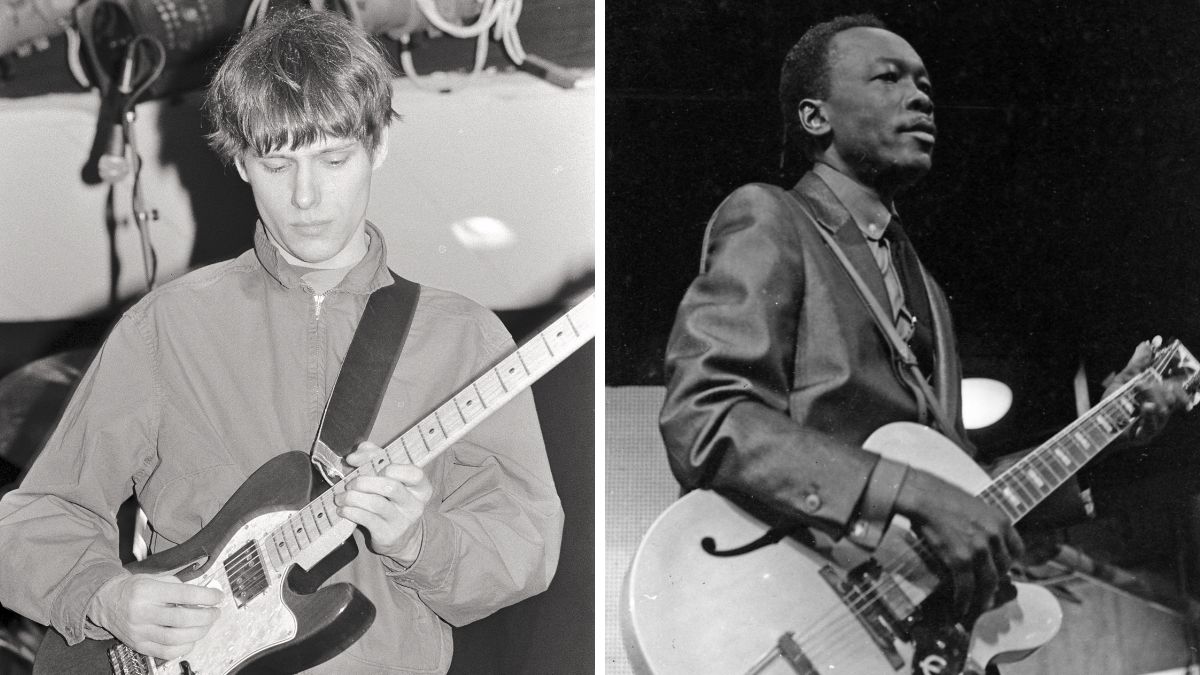5 ways to improve your sweep picking technique
Sweep picking is a technique that stumps many, infuriates others, but is unmatched for delivering fluid arpeggio runs. This lesson follows in the pick sweeps of Synyster Gates, Frank Gambale et al

Sweep picking is an efficient technique, combining elements of alternate picking with logical economy of motion. Typically, sweep picking found favour in ’80s rock to play fluid arpeggio runs, where for the most part, a single note is played on each string.
However, sweep picking is found in many genres where the use of arpeggios is prevalent such as jazz and fusion as well as rock and metal. I have chosen to focus on the latter two genres in this lesson, and have showcased a number of common three and five-string arpeggio shapes.
As mentioned, sweep picking is incredibly effective for playing arpeggios where one note is picked on a string. Of course, alternative picking could be used (check out Tumeni Notes by Steve Morse!) but sweeping picking is more economical.
The CAGED system comes into play when thinking about sweep picking, and this month I have focused mainly on the popular C shape in both Major and Minor forms as well as triads using the first, second and third strings. These arpeggios are a great place to start and I would urge you to explore other arpeggio shapes once you have these firmly under your fingers.
The main focus with this technique is on the picking hand. When ascending or descending an arpeggio when sweeping, the pick needs to glide through the strings in a similar motion to a single strum. But there’s also a challenge here for the fretting hand, which needs to keep up with the guitar pick, making sure to fret each note individually, while trying to avoid any over-ringing of strings.
Where this becomes particularly tough is when playing more than one string on the same fret. Look at the first example on the next page, the first A Minor arpeggio is played using the 5th fret on the first, second and third strings. The trick here is to roll the first finger so that once each note is picked, the fretting finger reduces pressure to mute the note.
This principle is applied to each note so that the resulting sound is that of clear and distinct notes, rather than a strummed chord where all of the notes ring into each other. The same technique is used when descending the arpeggio, with the first note on the 5th fret played with the pad of the first finger, leaving enough flesh left to roll over to the following notes.
All the latest guitar news, interviews, lessons, reviews, deals and more, direct to your inbox!
It is important to tackle the examples at slow speeds at first in order to synchronise your hands, especially if sweep picking is new to you. Aim for a smooth and consistent picking technique when ascending and descending each arpeggio, while the fretting hand follows with perfect coordination.
You may wish to play each arpeggio in isolation, before tackling the examples in full, in order, so as to focus on the fingering for each shape. You’ll find a metronome to be a valuable tool to help you focus on your timing.
Get the tone
Amp settings: Gain 6, Bass 6, Middle 4, Treble 5, Reverb 3
The great exponents of sweep picking do it with a variety of different guitars, from jazz guitars to metal axes. So in this instance guitar and pickup choice doesn’t really matter, but it makes sense to experiment with different pickup positions, gain levels and tones, to see which suits you best. Don’t go heavy on the reverb and delay, as this can obscure what we want to achieve.
Examples
Example 1. Triad arpeggios with finger rolling
Our first example shows how sweep picking can be applied to triads on the first, second and third strings. The trickiest part here is using the first finger of the fretting hand to play the arpeggio in the 5th position. To do this cleanly, roll your finger across the strings so that the notes are separate and do not bleed into each other.
Example 2. Sweep picking plus pull-offs
This example takes the triad idea somewhat further, with a couple of sweep picking licks combined with pull-offs to create a series of fluid licks in two different positions. Focus on getting the triplet phrasing right here, in order to get a fluidly repetitive sound.
Example 3. C minor and major shape arpeggios
This introduces you to the classic C shape arpeggio, using both minor and major shapes. Aim for a smooth and consistent approach from your picking hand, ensuring that you mute each string once it has been played, so as to avoid notes ringing into each other.
Example 4. Triplet runs over A minor and G major shapes
Example 4 takes the previous idea further, with a flow of triplets using A minor and G major C shape arpeggios. Again, aim for fluidity and even timing, with clear and defined notes. Once you have these examples down, you should aim to incorporate them into your own playing – judiciously, of course!
Example 5. Study piece
This study piece incorporates many of the ideas from the examples. It starts off with a series of triads using the first, second and third string before moving on to a classic minor descent chord progression, with each chord being outlined by C shape arpeggios.
At bar 19, we see a series or triadic arpeggios moving between A minor and C major with a two-bar phrase repeated four times. As always, aim for even phrasing, while trying to not let the notes ring into each other.
The final phrases contain a mix of three and five-string arpeggios. The trickiest arpeggio here is bar 28’s ‘A shape’ A minor arpeggio, which combines two adjacent notes on the 14th fret. So, again, you will need to roll your third finger. Finally, it’s very easy to rush these arpeggios, so follow your metronome closely.
Simon is a graduate of the UK's Academy of Contemporary Music and The Guitar Institute, and holds a Masters degree in music. He teaches, examines and plays everything from rock to jazz.


